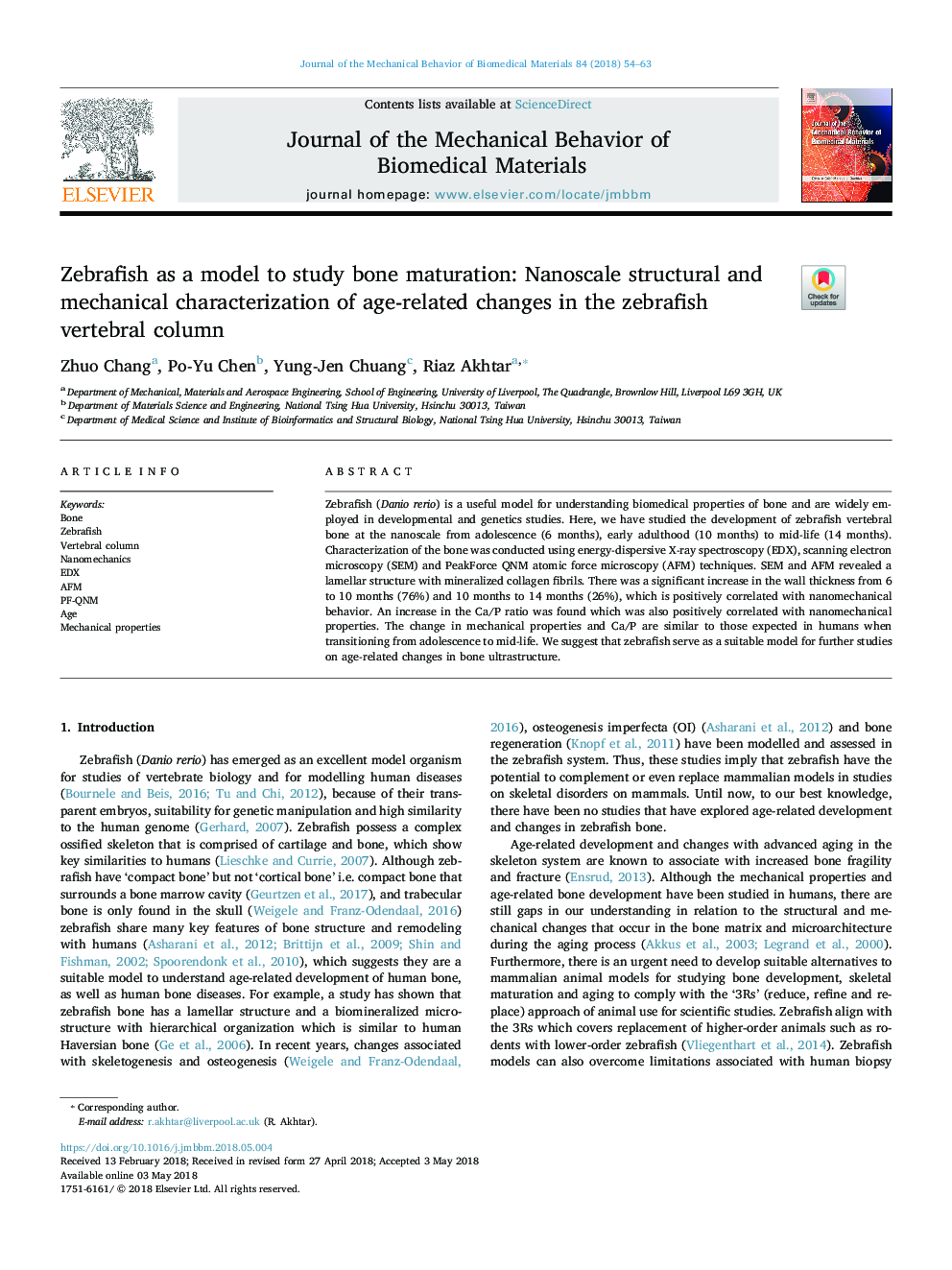| Article ID | Journal | Published Year | Pages | File Type |
|---|---|---|---|---|
| 7206968 | Journal of the Mechanical Behavior of Biomedical Materials | 2018 | 10 Pages |
Abstract
Zebrafish (Danio rerio) is a useful model for understanding biomedical properties of bone and are widely employed in developmental and genetics studies. Here, we have studied the development of zebrafish vertebral bone at the nanoscale from adolescence (6 months), early adulthood (10 months) to mid-life (14 months). Characterization of the bone was conducted using energy-dispersive X-ray spectroscopy (EDX), scanning electron microscopy (SEM) and PeakForce QNM atomic force microscopy (AFM) techniques. SEM and AFM revealed a lamellar structure with mineralized collagen fibrils. There was a significant increase in the wall thickness from 6 to 10 months (76%) and 10 months to 14 months (26%), which is positively correlated with nanomechanical behavior. An increase in the Ca/P ratio was found which was also positively correlated with nanomechanical properties. The change in mechanical properties and Ca/P are similar to those expected in humans when transitioning from adolescence to mid-life. We suggest that zebrafish serve as a suitable model for further studies on age-related changes in bone ultrastructure.
Related Topics
Physical Sciences and Engineering
Engineering
Biomedical Engineering
Authors
Zhuo Chang, Po-Yu Chen, Yung-Jen Chuang, Riaz Akhtar,
